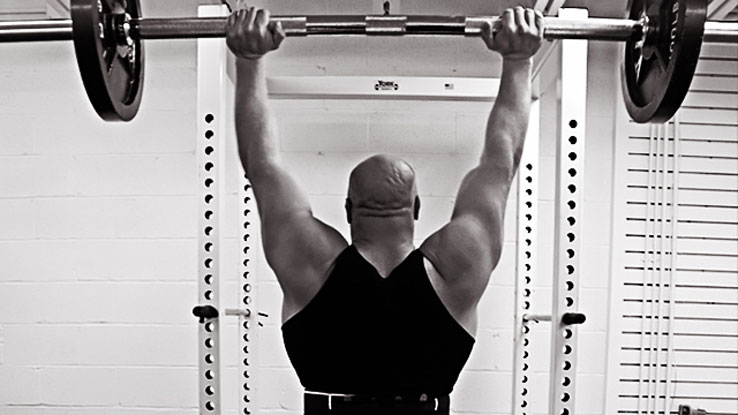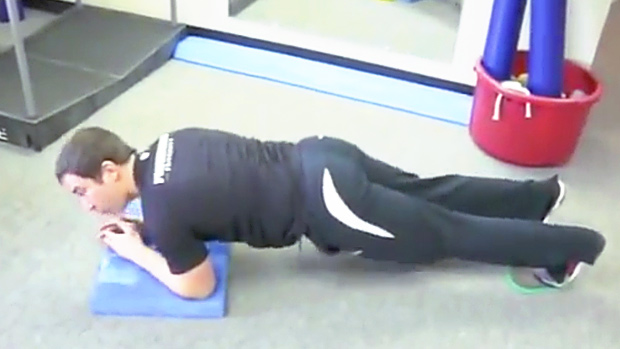It's All About the Ankles
Ankle immobility is a major reason some lifters have trouble reaching adequate depth, staying balanced, and remaining stable during a squat. Specifically, the inability to move the ankle into enough dorsiflexion causes these problems.

Above, we see what happens if the ankle doesn't dorsiflex enough during a squat. It causes the heel to peel off the ground. (Imagine tipping the letter "L" to the right.) In this case, the forefoot is the only part able to apply force into the ground. The weight shifts forward, the knees receive excess stress, and posterior musculature is under-stimulated.

A squatter demonstrating good dorsiflexion resembles the above diagram. We see that the shin still moves forward, but now the feet stay flat on the ground. Dorsiflexion of the ankle is what allows this to take place, and now the lifter can apply force throughout the entire foot, making the squat safe and effective.
How to Mobilize Your Ankles
To exaggerate the dorsiflexion you need, put two weight plates on the ground (the same distance apart as your squat stance) in front of a power rack. The thickness of the plates will depend on your current ankle mobility. Five or 10-pound plates should provide enough thickness, and you can even experiment with a mat or thin board to get the same effect.
Step onto the plates so that the plates elevate your toes and keep your heels on the ground. Holding on to the rack, pull yourself into a deep squat.
From here, experiment with hitting different positions: Sit at the bottom. Lean front to back and side to side. Bounce around. Even squat up and down. Doing these movements while your ankle is in extreme dorsiflexion will help mobilize the ankle.
Stay on the plates for 15-30 seconds at a time. When you step off the plates and back onto the flat ground, your ankle dorsiflexion will be super-compensated to the point where you'll be able to glide to the bottom of a squat with ease.
Key Points
Make sure to keep your heels in contact with the ground while you're on the plates. If you let them come off the ground at all, you defeat the purpose.
Force the shins forward to exaggerate closing the ankle joint angle. If you sit too far back onto your heels and allow your shins to angle back (as will be most comfortable), you won't be forcing dorsiflexion.
Start with a thin plate or object to stand on, and work to a thicker one as mobility improves.
This drill will be especially helpful to anyone who squats in weightlifting shoes. Weightlifting shoes elevate the heel, and therefore don't require the ankle to move through as much range of motion as a flat-soled shoe does. This drill creates the opposite effect of wearing weightlifting shoes by pitching the forefoot up rather than the heel.
Use this drill on days you squat, in between your first few warm-up/work-up sets. Amplify the effects of this drill by also including things such as tip toe walking, ankle rolling, and static calf stretching.





